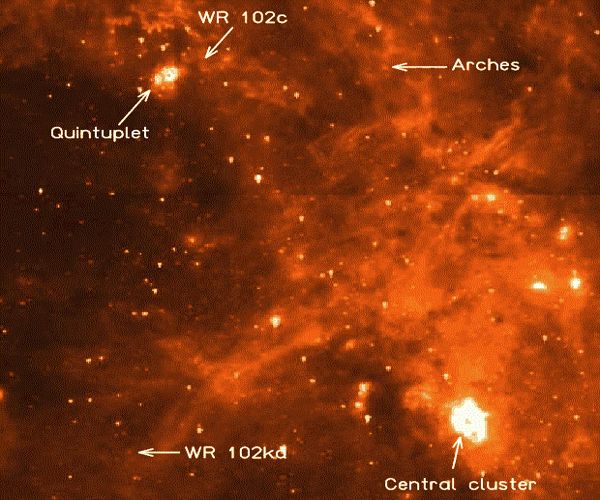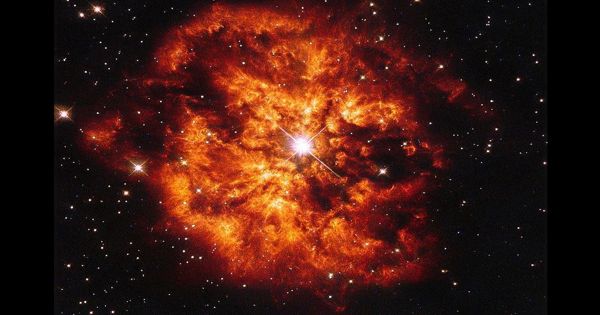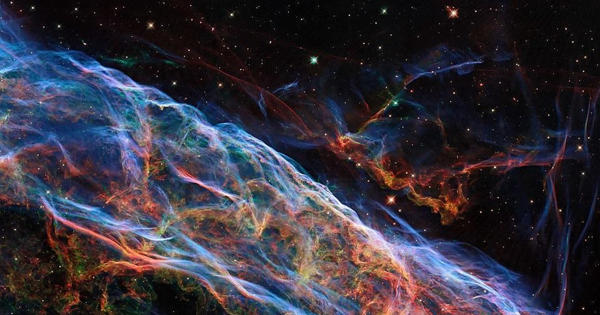WR 102ka is a blue supergiant star. It is also known as the Peony star, is a Wolf–Rayet star that is one of several candidates for the most luminous-known star in the Milky Way. It had originally at least 150 solar masses, from which it probably has lost already a considerable part. It is found in the constellation Sagittarius and is located near the middle of the Milky Way. It is 92 times larger than the Sun and 3.2 million times brighter.
WR 102ka lies near the Galactic Center and is essentially totally obscured in visible wavelengths. It is one of the brightest stars in the milky way and a good candidate for a soon to come supernova. Thus it must be observed in longer-wavelength infrared light, which is able to penetrate the dust. WR 102ka was cataloged in 2002 and 2003 by infrared surveys.
The most luminous stars are also the most massive. Researchers assume that the peony nebula began its existence as a luminous blue variable (LBV) with 150–200 solar masses. Thus it must be observed in longer-wavelength infrared light, which is able to penetrate the dust. Such extremely massive stars are extremely rare and puzzles researchers to this day, as their mass is actually above the maximum limit for a single star.

Properties
WR 102ka is hidden behind thick layers of dust and therefore is hard to observe. It can not be observed in visible light. Only observations in the infrared spectral range by Spitzer made it visible.
- Constellation: Sagittarius
- Distance: 26 000 light-years
- Spectral class: WN10
- Luminosity: 3.2 million * Sun
- Diameter: 100 * Sun
With the help of the 3.6 meter New Technology Telescope (NTT) of the European Southern Observatory (ESO) in Chile, the brightness of WR 102ka could be determined more closely. As WR 102ka lies near the Galactic Center, it is the more distant and heavily obscured of the two and is essentially totally obscured in visible wavelengths. WR 102ka belongs to the WN type of Wolf-Rayet stars, which mainly shows emission lines from nitrogen.
Astronomers are certain that after its life of only a few million years, WR 102ka will explode in a supernova, presumably of the SN Ic type. WR 102ka was previously observed by the Two Micron All Sky Survey (2MASS) in the near-infrared J, H, and Ks bands, at 1.2 µm, 1.58 µm, and 2.2 µm, respectively. As a result of the explosion, it will shine brighter than all the other stars in the Milky Way combined for some time, but this will not be observable from Earth as the dust and fog surrounding it will absorb almost all of the light.
Information Source:
















